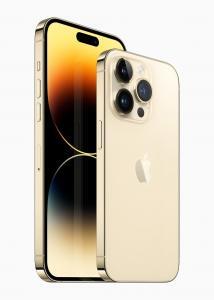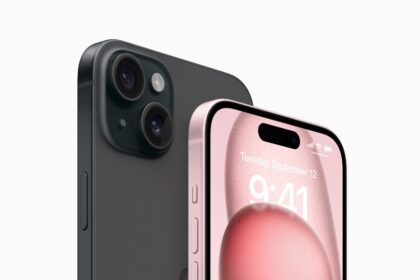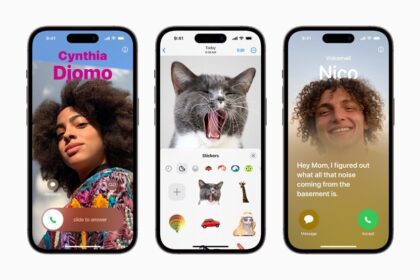The iPhone is undoubtedly one of the most popular smartphones in the world, with millions of users across the globe. Apple has consistently improved the iPhone’s design, features, and functionality over the years, making it a must-have device for many people. However, even with its many benefits, the iPhone does come with some major disadvantages that users should be aware of before making a purchase decision.

In this article, we will discuss the eleven major disadvantages of the iPhone, including its high price, limited customization options, battery life issues, and more.
11 Disadvantages of an iPhone
1. High Cost
The iPhone is known for being one of the most expensive smartphones on the market, with prices ranging from $429 for the base model of the iPhone SE to over $1400 for the top-of-the-line iPhone 14 Pro Max with the highest storage capacity.
The high cost of the iPhone can be a significant disadvantage for users who are on a tight budget or who prefer more affordable smartphone options. It can also be a barrier for users in countries with lower average incomes or for those who do not have access to carrier subsidies or financing options.
Furthermore, the high cost of the iPhone can be a disadvantage for users who want to upgrade their device frequently, as purchasing a new iPhone every year or two can quickly add up in cost.
While some users may argue that the high cost of the iPhone is justified by its premium features and performance, others may feel that they are paying a premium for the Apple brand name or for features that they do not necessarily need or use.
While Apple does offer older iPhone models at lower price points, these devices often lack the latest features and technology found in newer models. This can result in a less than optimal user experience for those who opt for a cheaper iPhone.
2. Limited Customization Options
Another major disadvantage of the iPhone is its limited customization options. Apple is known for its strict control over its hardware and software ecosystem, which means that users are limited in their ability to customize their device beyond the options provided by Apple.
For example, users cannot install third-party apps outside of the App Store, which limits their ability to explore alternative apps and services. Similarly, the iPhone’s user interface is relatively rigid, and users cannot make significant changes to the way their device looks and feels.
Although Apple’s strict control over its ecosystem does provide some benefits, such as increased security and stability, it can be frustrating for users who want more control over their device. Android users, for example, have much more freedom to customize their device and install third-party apps, which can be a significant selling point for many buyers.
While Apple has made some efforts to improve customization options in recent years, such as by introducing the ability to add widgets to the home screen and allowing users to set default third-party apps, the options are still more limited compared to many Android smartphones.
3. Battery Life Issues
Another disadvantage of an iPhone is its limited battery life. While Apple has made some improvements to the iPhone’s battery life over the years, the device still struggles to last a full day with heavy use.
This can be a significant drawback for users who rely on their smartphone for work or who are frequently away from a power source. In addition, the battery on the iPhone is not user-replaceable, which means that users will need to send their device in for repairs if the battery begins to degrade over time.
While Apple has tried to address the iPhone’s battery life issues through software updates and battery-saving features, it remains a significant disadvantage of the device. Android devices, for example, typically have larger batteries and better battery life, which can be a significant selling point for heavy users.
4. Limited Storage Options
The iPhone’s storage options can be another significant disadvantage for users. While the latest iPhone models come with up to 1TB of storage, this is only available on the most expensive models. The base model iPhone 14, for example, only comes with 128GB of storage, which can be quickly filled up with photos, videos, and apps.
In addition, the iPhone does not support expandable storage options, such as microSD cards, which means that users are limited to the amount of storage provided by Apple. This can be a significant disadvantage for users who want to store large amounts of media on their device or who use their device for work purposes.
5. Fragility
Another big disadvantage of an iPhone is its fragility. While Apple has always been known for its sleek and stylish designs, this can come at the cost of durability. The iPhone’s glass screen and aluminum or glass back can be easily damaged if dropped, which can result in costly repairs or even the need to purchase a new device.
While Apple has made some improvements to the iPhone’s durability over the years, such as the introduction of Ceramic Shield on the iPhone 12, it still remains a relatively fragile device compared to some of its competitors. This can be a significant disadvantage for users who are prone to dropping their device or who use their device in rugged environments.
6. Lack of Headphone Jack
The removal of the headphone jack on newer iPhone models can be a significant disadvantage for some users. Apple first removed the headphone jack on the iPhone 7 in 2016, and has continued to do so on newer models, such as the iPhone 14.
While Apple provides users with a Lightning-to-3.5mm adapter, this can be inconvenient for users who want to use wired headphones or who want to charge their device while listening to music. In addition, the adapter can be easily lost or broken, which can result in additional expenses for users.
While Apple’s decision to remove the headphone jack was likely driven by a desire to make the iPhone thinner and more water-resistant, it can be a major disadvantage for users who value the convenience of a headphone jack.
7. Limited Expandable Storage
Another disadvantage of an iPhone is its limited expandable storage options. Unlike many Android smartphones, which allow users to expand the device’s storage capacity using a microSD card, the iPhone does not offer this feature.
Instead, users must purchase a higher-capacity iPhone model if they require more storage space. For example, the latest iPhone 14 models offer storage capacities ranging from 128 GB to 1 TB, with the cost increasing significantly for higher storage capacities.
This can be a major disadvantage for users who need a large amount of storage space but are unwilling or unable to pay for a higher-capacity iPhone model. In addition, it can be frustrating for users who want to store a large number of photos, videos, or music on their device, as this can quickly fill up the device’s internal storage.
While Apple does offer cloud storage options, such as iCloud, these services can be costly and may not be suitable for users with limited internet access or who prefer to store their data locally on their device.
8. Proprietary Charging Cables and Accessories
One of the disadvantages of an iPhone is that it uses proprietary charging cables and accessories, such as the Lightning connector. We had our fingers crossed hoping that the iPhone 14 would be the first USB-C iPhone. But, the latest iPhone is still stuck with Lightning—the same port we’ve had since 2012.
You might have heard that the EU wants all new phones to have USB-C. And in 2022, that idea became law in the EU. However, that new legislation won’t go into effect until 2024. So, if you were waiting for a USB-C iPhone, you’ll need to hold out a little longer.
Unlike many other smartphones that use standard USB cables, the iPhone’s proprietary charging cables can only be used with Apple products, which can be inconvenient and costly for users.
For example, if a user loses or forgets their iPhone charging cable, they must purchase a new cable from Apple or a licensed third-party seller, which can be more expensive than a standard USB cable. Additionally, some users may need to purchase additional accessories, such as adapters or converters, to use their iPhone with non-Apple devices or to connect their iPhone to other devices, which can also be costly.
This can be frustrating for users who prefer to have more flexibility and control over their charging options, as they are limited to using Apple-approved accessories. It can also be inconvenient for users who travel frequently, as they may need to carry multiple charging cables or adapters to use their iPhone with different power sources or devices.
Furthermore, the proprietary nature of the iPhone’s charging cables and accessories can be seen as a deliberate attempt by Apple to lock users into their ecosystem, as it can be difficult or costly for users to switch to a different smartphone platform without also having to purchase new accessories.
9. Expensive Repair Costs
Another disadvantage of an iPhone is the expensive repair costs associated with the device. Due to the proprietary design and closed system of the iPhone, repairs and replacements can only be performed by Apple or authorized Apple repair centers, which can result in high costs for users.
For example, if the screen of an iPhone is cracked, users may need to pay a high fee to have it repaired by Apple or an authorized repair center. The cost of screen repairs can range from $129 to $379 depending on the model and type of damage. Additionally, repairs for other components such as the battery or charging port can also be costly and may require a full device replacement.
This high cost of repairs can be a disadvantage for users who want to keep their device for several years and may experience wear and tear over time. It can also be a disadvantage for users who want to repair their device themselves or take it to a third-party repair center, as this can void their device’s warranty and may result in further issues.
Additionally, the high cost of repairs can also be a disadvantage for users who are considering purchasing an iPhone but may be hesitant due to the potential for damage and repair costs. This can make the iPhone a less attractive option compared to other smartphones that offer more affordable repair options or are more easily repairable.
10. Limited Compatibility with Non-Apple Devices
Another major disadvantage of an iPhone is the limited compatibility with non-Apple devices. While the iPhone works seamlessly with other Apple products and services, such as the Apple Watch, AirPods, and iCloud, it may have limited compatibility with devices and services from other manufacturers.
For example, users may have difficulty connecting their iPhone to non-Apple devices such as smartwatches, fitness trackers, or Bluetooth headphones. Additionally, some third-party apps may not be optimized for use with the iPhone or may not be available on the App Store, limiting the functionality of the device compared to other smartphone options.
This limited compatibility can be a disadvantage for users who rely on non-Apple devices or services for their daily use, such as those who use a Windows computer or Android smartwatch. It can also be a disadvantage for users who want to have more flexibility and freedom in choosing their device’s accessories or apps.
While Apple has made some efforts to improve compatibility with non-Apple devices in recent years, such as by adding support for more Bluetooth devices and integrating with some third-party services, the options are still more limited compared to many Android smartphones.
11. No inbuilt FM radio
One of the disadvantages of an iPhone is that it does not come with an inbuilt FM radio. FM radio broadcasts can be useful in emergency situations when internet connectivity may be limited or unavailable. For example, during natural disasters or power outages, FM radio broadcasts can provide important updates and information about the situation.
Lack of an inbuilt FM radio on an iPhone is a huge disadvantage for users who live in areas with poor internet connectivity or limited data plans. This is because streaming radio stations use up a significant amount of data, which is costly for users who are on a limited data plan.
While there are third-party apps available on the App Store that allow users to listen to FM radio broadcasts, these apps often come with limitations and require an internet connection to function. Additionally, users may have to pay for access to certain radio stations or features within the app.
Conclusion
While the iPhone is undoubtedly a fantastic device, it does come with some significant disadvantages that buyers should be aware of before making a purchase decision. The iPhone’s high price, limited customization options, and battery life issues are all factors that can make it a less attractive option for some buyers.
However, it’s essential to keep in mind that these disadvantages are relative, and what may be a disadvantage for some users may not be for others. Ultimately, the decision to purchase an iPhone should be based on the user’s needs, preferences, and budget, rather than the device’s shortcomings.











